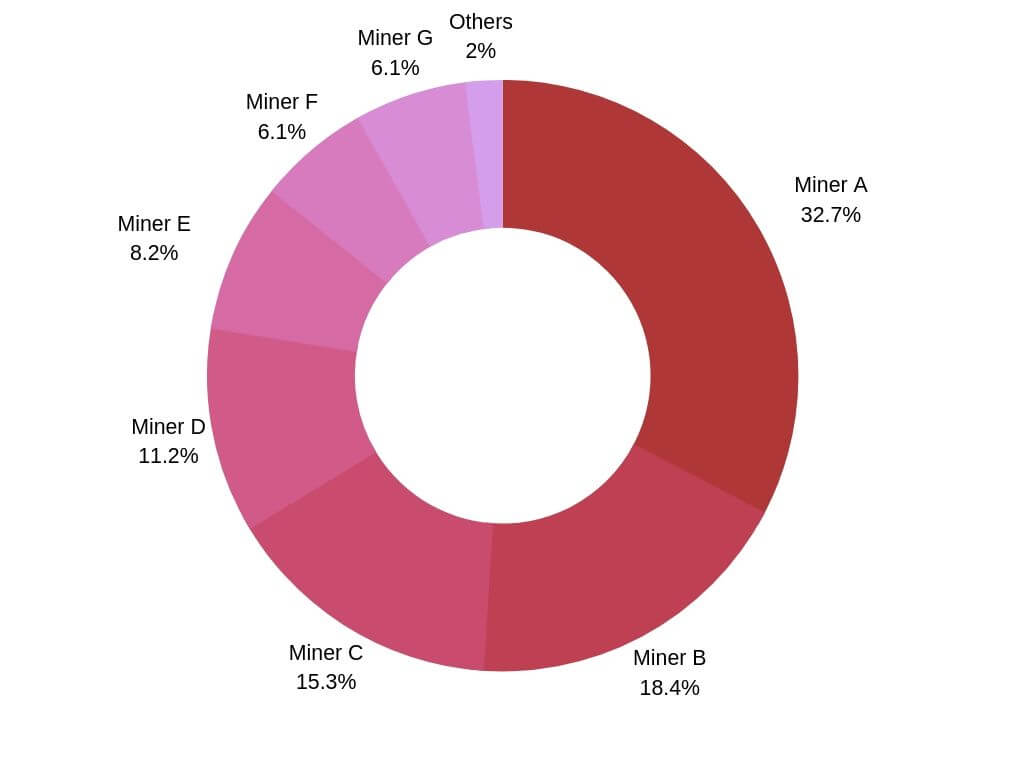Blog roll please!
Quick reads across a variety of topics
Blockquick Consensus Reputation Table Explained
Blockquick
01 Jul
14:35

Download full paper here (PDF). Diode’s CTO Dominic Letz published a paper recently to give an introduction of BlockQuick, a super light client protocol for blockchain validation on constrained devices. One of the key concepts behind the newly proposed BlockQuick is that it plans to adopt a consensus-based reputation scheme to accept blocks. This article explores how blockchain synchronization of Internet-of-Things (IoT) devices can be achieved through BlockQuick consensus reputation table, as well as sheds...
Why The Internet Infrastructure Is Vulnerable To Bgp Hijacking Attacks
Security
24 Jun
10:02

Earlier this month, Doug Madory, Oracle’s director of internet analysis, wrote in a blog post detailing a BGP route leak incident happened on Thursday, June 6. For approximately two hours, a massive amount of European Internet traffic was rerouted through China Telecom’s own servers. The Internet traffic was rerouted following a BGP route leak at Swiss data center colocation company Safe Host. Over 70,000 routes - comprising an estimated 368 millions IP addresses coming out...
Messaging Service Telegram Was Hit By a DDoS Attack, What Needs to Change?
Security
18 Jun
16:07

According to a report, Telegram’s CEO Pavel Durov confirmed on Wednesday (June 12) that his popular messaging service experienced a “powerful” Distributed Denial-of-Service (DDoS) attack. The DDoS attack disrupted Telegram’s services for about an hour. He later tweeted that the IP addresses involved in the attack were coming mostly from China. “IP addresses coming mostly from China. Historically, all state actor-sized DDoS (200-400 Gb/s of junk) we experienced coincided in time with protests in Hong...
Proof Of Stakework A Community Vision
Blockchain
17 Jun
17:46

[Note: This post is a follow-on discussion to topics discussed in Introducing Proof-Of-StakeWork and requires some background knowledge in blockchain technology.] In the last post on Proof-Of-StakeWork we talked about some of the advantages and disadvantages of both Proof-Of-Work (POW) and Proof-Of-Stake (POS) so I won’t go into those details here. The purpose of this post is to more fully articulate the vision and motivation behind Proof-Of-StakeWork (POSW) and to provide a little more detail...
How Blockquick Super Light Client Protocol Can Help Mitigate Eclipse Attacks
Blockchain
10 Jun
14:24

In May, Diode’s CTO Dominic Letz published a paper introducing BlockQuick, a super light client protocol for blockchain validation on constrained devices. The paper shows that unlike other existing approaches such as proofs of proof-of-work (PoPoW) and FlyClient, Diode’s BlockQuick super light client protocol is capable of protecting against eclipse attacks and man-in-the-middle attacks on a peer-to-peer network. But what is an eclipse attack? Is it possible to prevent some of blockchain’s biggest security threats?...
How Decentralized Public Key Infrastructure Will Be The Future For The Web
PKI
28 May
15:54

If you’ve been following our blog, you will have heard us mentioning the term decentralized public key infrastructure before. But you probably don’t know what it is or how it works, let alone why it matters so much. In this post, we will examine current approaches to the traditional centralized PKI, explore the basics of decentralized public key infrastructure (DPKI), and then show how blockchain-based DPKI can make an impact as the industry transitions to...
Blockquick Super Light Blockchain Client For Trustless Time
Burning Platform
24 May
19:12

- Click here if you just want to read the Paper - In the last two posts of this series, we first introduced the governance issues in PKI and then the circular dependency between establishing trust in PKI certificates and establishing the current time on a connected device. So let’s break that circular dependency between time and trust. The difference between trusting a person/an entity and trusting data is key here. How can we establish...
From Software Defined Networking to Blockchain Defined Networking
Decentralization
22 May
17:02

Software Defined Networking (SDN) and Network virtualization have been the disruptor technologies that were fundamental to the success of Infrastructure as a Service (IaaS) providers such as Amazon AWS, Google Cloud Compute, and Azure during the last decade. Before that, there were plenty of rival cloud providers - for most of them, changing network configurations, adding/removing machines to a network required human interaction and would take hours or sometimes days. Dedicated networking, networking lines, and...
The impact of decentralized infrastructure on wireless communications
Decentralization
20 May
09:19

The Diode Network enables practical distributed trust for IoT communications (and for other modalities as well). The implications of this for distributed IT infrastructure are significant. However, as the reality of distributed infrastructure emerges, other more immediate applications on the way to fully distributed infrastructure are also interesting. One of these applications is distributed wireless network operations. For star topology wireless networks, as exists in today’s cellular communications paradigm, there are four primary things required...
Introducing Proof-Of-StakeWork
Blockchain
06 May
13:42

[Note: This post requires background knowledge in blockchain technology. We have provided links to background information.] After determining a blockchain project’s reason for existence, the next most important decision developers and entrepreneurs must consider is the mechanism through which their network will arrive at consensus. There are many different types of consensus protocols, but the vast majority of them can be placed into one of two buckets, Proof-of-Work (POW) or Proof-of-Stake (POS). Many developers may...
